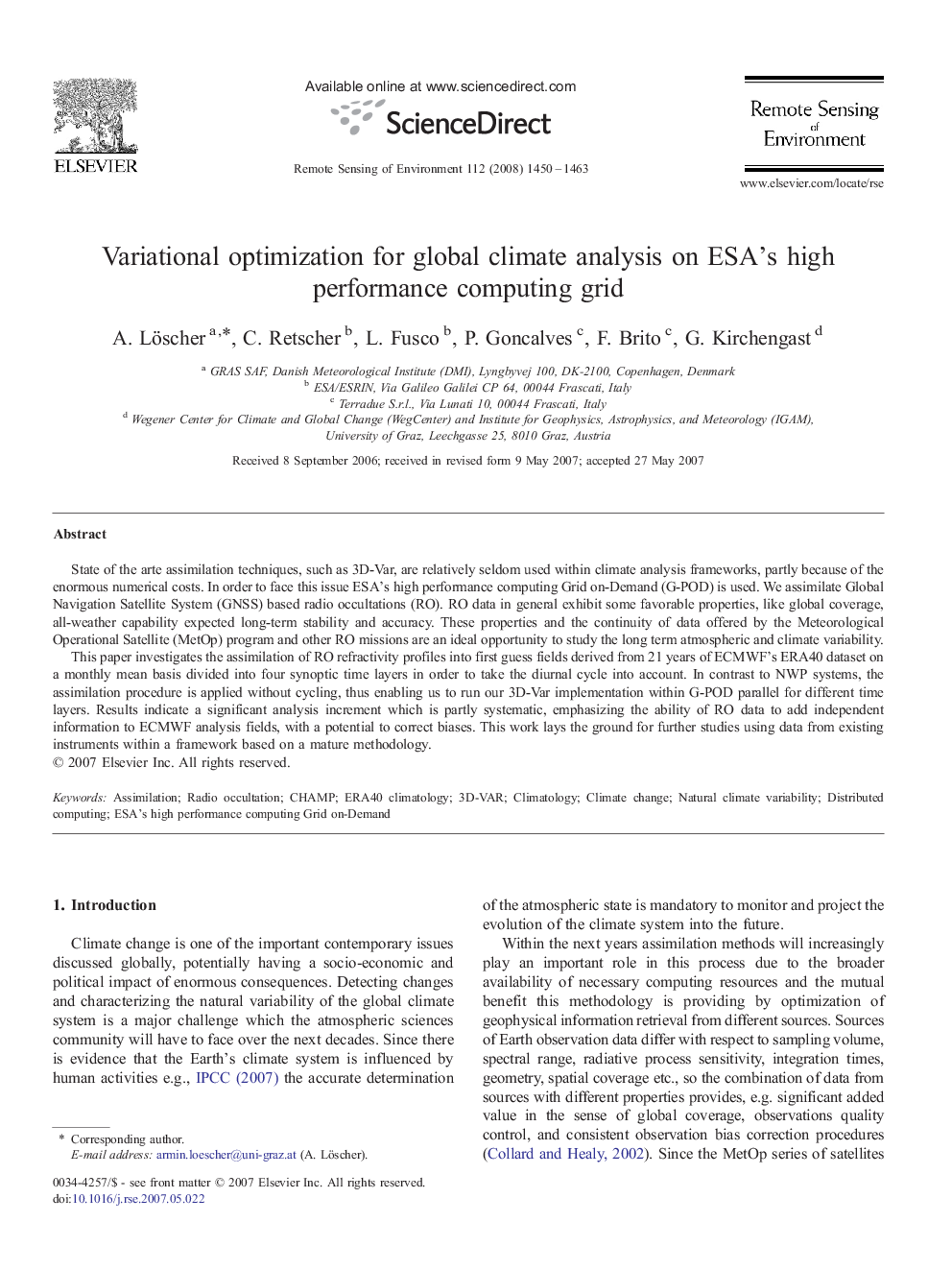| Article ID | Journal | Published Year | Pages | File Type |
|---|---|---|---|---|
| 4460376 | Remote Sensing of Environment | 2008 | 14 Pages |
State of the arte assimilation techniques, such as 3D-Var, are relatively seldom used within climate analysis frameworks, partly because of the enormous numerical costs. In order to face this issue ESA's high performance computing Grid on-Demand (G-POD) is used. We assimilate Global Navigation Satellite System (GNSS) based radio occultations (RO). RO data in general exhibit some favorable properties, like global coverage, all-weather capability expected long-term stability and accuracy. These properties and the continuity of data offered by the Meteorological Operational Satellite (MetOp) program and other RO missions are an ideal opportunity to study the long term atmospheric and climate variability.This paper investigates the assimilation of RO refractivity profiles into first guess fields derived from 21 years of ECMWF's ERA40 dataset on a monthly mean basis divided into four synoptic time layers in order to take the diurnal cycle into account. In contrast to NWP systems, the assimilation procedure is applied without cycling, thus enabling us to run our 3D-Var implementation within G-POD parallel for different time layers. Results indicate a significant analysis increment which is partly systematic, emphasizing the ability of RO data to add independent information to ECMWF analysis fields, with a potential to correct biases. This work lays the ground for further studies using data from existing instruments within a framework based on a mature methodology.
